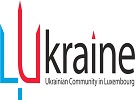 Dalheim Gallo-Roman theatre;
Credit: Nena Sand © INRA
Dalheim Gallo-Roman theatre;
Credit: Nena Sand © INRA
Chronicle.lu has teamed up with Luxembourg's National Institute for Archaeological Research (Institut national de recherches archéologiques - INRA) for a series of articles on archaeological digs and discoveries around the Grand Duchy.
The series explores digs spanning from prehistoric to Roman and medieval times, highlighting key finds and what they reveal about Luxembourg’s past. It also sheds light on the work of the INRA and its approach to archaeological and historical research.
The latest article in this series looks at Ricciacum / Dalheim, the largest known Gallo-Roman town in Luxembourg.
Hidden beneath fields and meadows lie the remains of an entire Roman town known as "Ricciacum" - an ancient relay and trading post along the Via Agrippa, an important long-distance road connecting the Mediterranean to the Rhine.
From the First Mentions...
As early as the 17th century, the Jesuit priest and "father of archaeology in Luxembourg", Alexandre Wiltheim (1604-1684), described the site and its artefacts in his publication on archaeological sites from the Roman period in Luxembourg, Trier and the Eifel region.
The well-known character of the site then led to first official excavations between 1851 and 1855, prior to the construction of the Route des Trois Cantons (today's N13). These are the earliest systematically documented excavations in Luxembourg and were published from 1852 to 1856.
…to Recent Excavations & Surveys
Afterward, apart from the occasional treasure hunter, the site remained dormant until 1976, when, due to an extreme drought, the settlement became clearly visible in aerial photographs. The strategic purchase of land by the State during this period allowed targeted scientific excavations by the archaeological department of the National Museum of History and Art (Musée national d'histoire et d'art), resulting in two large campaigns from 1977 to 1998, followed by smaller investigations in the 1980s, 1990s and the 2000s. After 2011, the investigations were led by the National Archaeological Research Centre (Centre national de recherche archéologique - CNRA; today's INRA).
Nearly 170 years of research have led to a better understanding of this important site of Luxembourg's Gallo-Roman past, although each excavation also brought new questions.
What We Know
Celtic artefacts indicate the existence of a settlement from the La Tène period (ca. 450 to 15 BCE) on the plateau - a so-called "vicus" - prior to the Roman town.
Nevertheless, the vicus appears to have been a new foundation created in connection with the construction of the Via Agrippa around 17 BCE. This is supported on the one hand by its strategic position at the junction of the road at the end of a straight section and on the other hand by its location at the halfway point between the two central cities of "Divodurum Mediomatricorum" (Metz) and "Augusta Treverorum" (Trier).
In the beginning, the settlement consisted of simple narrow wooden buildings with stone cellars, known as strip houses, which were located along both sides of the road and were the typical vicus constructions. They combined shops, production, taverns and housing. After the middle of the 1st century, the main street was widened, the buildings were gradually rebuilt in stone and the settlement increasingly took on the appearance of a small Roman city with large public buildings such as a theatre (one of the best-preserved Gallo-Roman theatres in the region), a sacred area with up to seven known temples, and a bath house.
At its peak, at the end of the 2nd / beginning of the 3rd century, the town encompassed around 35 hectares with an estimated population of 1,500 to 2,000 people. It served as the administrative, religious and social centre of an entire region, demonstrated by the theatre with an estimated capacity of 3,000 people.
Despite destructions during the Germanic invasions in the second half of the 3rd century and an associated decline in population, the final decline of Ricciacum did not take place until the beginning of the 5th century, which also marks the end of the Roman period in these regions.








